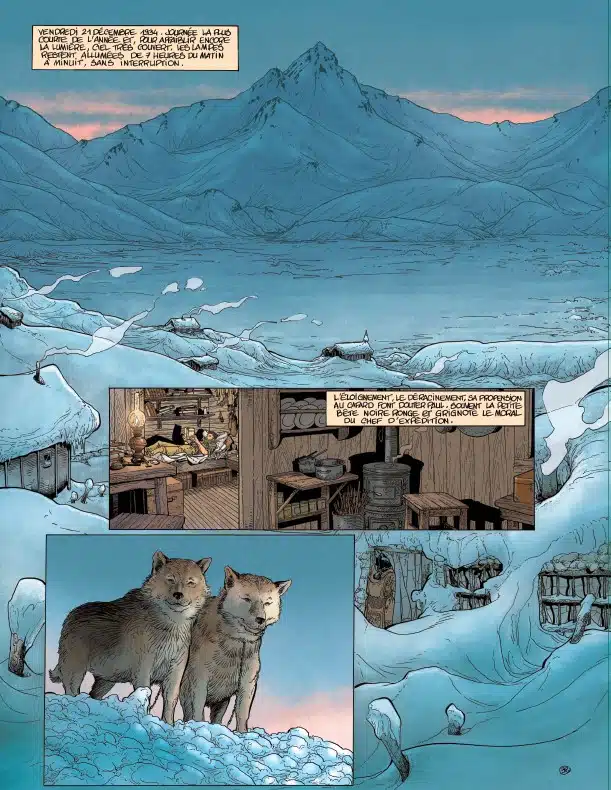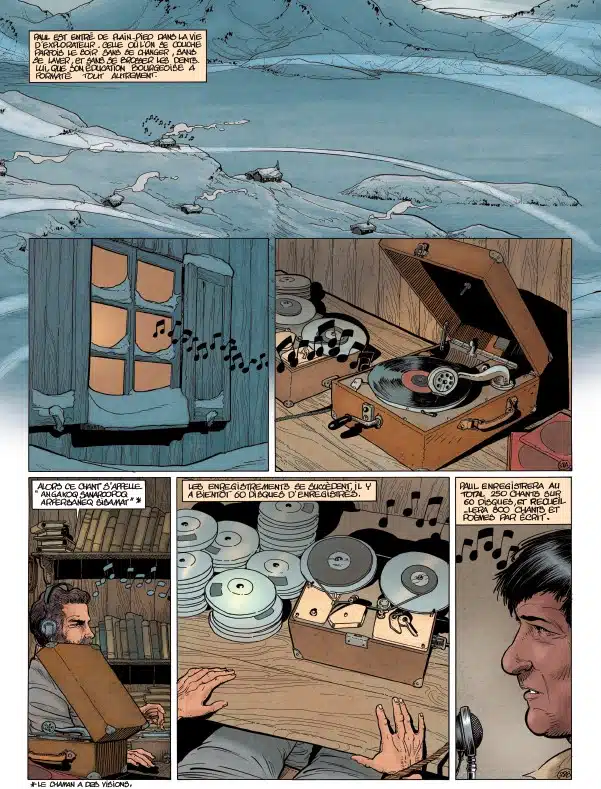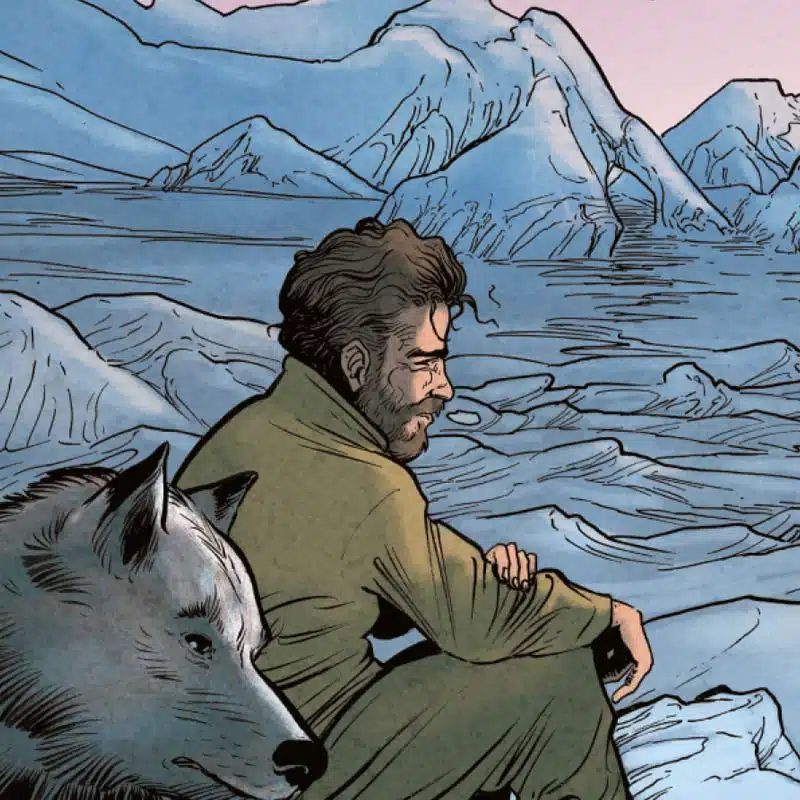A legacy of peoples and poles
There are encounters that can determine the course a life will take. One such is the encounter that occurred between the young up-and-coming ethnologist Paul-Émile Victor and the illustrious explorer Jean-Baptiste Charcot. Cécile Manet, a PONANT naturalist guide specialising in the history of the great explorers, gives us an insight into the career of this man with a passionate interest in the polar regions.
Initial expeditions to Greenland
Victor’s tenacity and strength of conviction won over Jean-Baptiste Charcot, who saw in him a natural successor to himself. “Mon p’tit, je vous emmène” (“I’ll take you, my boy”), he is said to have persuasively announced as he took the ethnologist aboard his legendary three-master Le Pourquoi Pas ?, alongside anthropologist and doctor Robert Gessain, geologist Michel Pérez and film-maker Fred Matter. When he landed in Angmagssalik, Greenland, he worked together with the local populations, which gave him an initial insight into the issues involved in preserving their way of life.

Illustration from the comic strip Paul-Émile Victor, la soif d’aventure, 1905-1937, by S. Dugast, S. Niveau, L. Seigneuret and F. Fleury, published by Sekoya in March 2024.
The following year, he and his companions organised an 800-km east to west crossing of the Greenland ice cap by dog sled, which they completed in 40 days. It was during this expedition that, thanks to his respectful approach towards the Greenlanders, he forged links with an Inuit community in Kangerdlugssuatsiak, where Jean-Baptiste Charcot again dropped him off in August 1936 (just prior to his death off the coast of Iceland) for a second overwintering, this time alone. Victor would not learn of his mentor’s demise, or the loss of a significant portion of the items collected during the trans-Greenland expedition, until 1937.
What motivated Victor above all was learning about the Inuit peoples – at the time, he was still using the term ‘Eskimo’. He wanted to immerse himself in their culture and discover their way of life and their relationship with nature.
Immersed with the Inuit
The French explorer had an intensive experience of Inuit culture lasting 14 months, in extreme and often hostile conditions. He lived with around thirty people in rudimentary accommodation and fell in love with a young woman called Doumidia, with whom he was involved for several years: “An Eskimo among Eskimos”, as he would later describe in his books. The local people, who had great difficulty pronouncing his name, affectionately referred to him as ‘Wittou’. He spoke in the Greenlandic he’d learnt on previous trips, and when that wasn’t enough to make himself understood, he used gestures.

Illustration from the comic strip Paul-Émile Victor, la soif d’aventure, 1905-1937, by S. Dugast, S. Niveau, L. Seigneuret and F. Fleury, published by Sekoya in March 2024.
“When he first arrived to overwinter, he was initially surprised by the omnipresent smell of seals,” recounts Cécile Manet. Inuit people use this animal in all aspects of their daily lives, though especially for food and clothing. Working alongside the locals, who saw him as one of their own, the explorer learned to hunt, exploit local natural resources and build shelters to protect himself from the cold. This experience left a deep impression on him, strengthening his connection with indigenous peoples and his commitment to protecting this culture and spreading knowledge about it.
Gathering and sharing knowledge
Victor managed to capture the essence of these lands through his many writings, photographs and drawings, and through items collected during this period. He returned with an in-depth study of these peoples and put together an invaluable collection of 4,000 ethnographic items. The detailed cartography forming part of his work has also contributed to further research into the geographical features of Greenland. In biological terms, his meticulously collected samples of flora and fauna are invaluable.

Illustration from the comic strip Paul-Émile Victor, la soif d’aventure, 1905-1937, by S. Dugast, S. Niveau, L. Seigneuret and F. Fleury, published by Sekoya in March 2024.
On his return from these expeditions, the charismatic Paul-Émile Victor enjoyed considerable media attention. These archives, which constitute a major piece of exploration heritage, are for the most part kept at the Musée de l’Homme in Paris. The museum director offered him a series of lectures, over the course of which he used his oratory talents to present his discoveries and raise public awareness about the richness and fragility of the polar regions. Over the years, he became a renowned speaker and continued to share his experience and knowledge at various events, conferences and public meetings. His aim was to highlight the scientific, geographical and cultural potential of these regions and to make France a major player in these fields.
Like Jean-Baptiste Charcot, Paul-Émile Victor felt that France was not investing enough in polar exploration.
The architect of France’s great polar adventure
In 1947, in the aftermath of the Second World War, during which he put his flying skills to work for the US Air Force while at the same time also introducing troops to the Arctic territories, Victor played a part in setting up Expéditions Polaires Françaises (EPF). The organisation, which he headed until 1976, was the first to be entirely dedicated to raising public and private funding for scientific research and exploration in the polar regions. It allowed a new series of French expeditions to be undertaken to Greenland and Adélie Land (Antarctica) from the following year onwards. Numerous long-distance polar treks and overwintering expeditions would also be undertaken, enabling the establishment of permanent scientific bases in wild, untamed lands.
Thanks to his material and intellectual contributions to our knowledge about the peoples of Greenland and the preservation of their ecosystem, Paul-Émile Victor has succeeded in writing his name in the annals of the history of great explorations. The work of a lifetime, it has enabled France to hold its own amongst the great polar-exploring nations.
Paul-Émile Victor: 6 key dates
1907: birth in Geneva.
1934: organisation of his first ethnographic expedition to the east coast of Greenland thanks to his decisive encounter with Jean-Baptiste Charcot.
1936: crossed the ice cap from west to east with 3 other explorers. On arrival, he spent 14 months living with the Inuit at Kangerlussuatsiaq.
1940: mobilised in the French navy during the Second World War.
1947-1976: creation and direction of Expéditions Polaires Françaises (EPF).
1977: settles in Polynesia. There he writes his memoirs and continues his commitment to environmental conservation.
Photo credits: ©Editions du Sekoya mars 2024

PONANT takes you there
Follow in the footsteps of the great explorers



